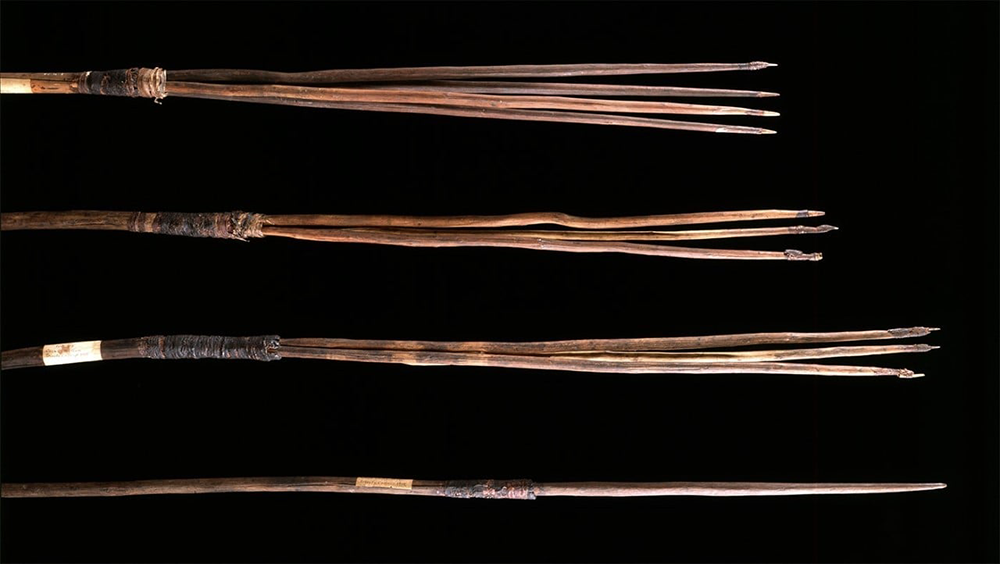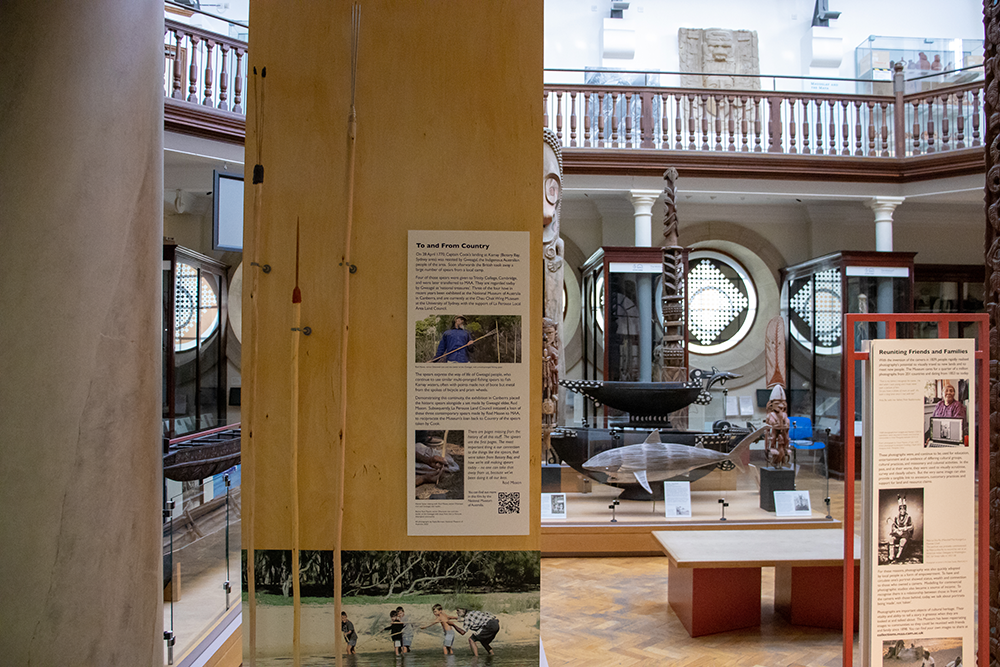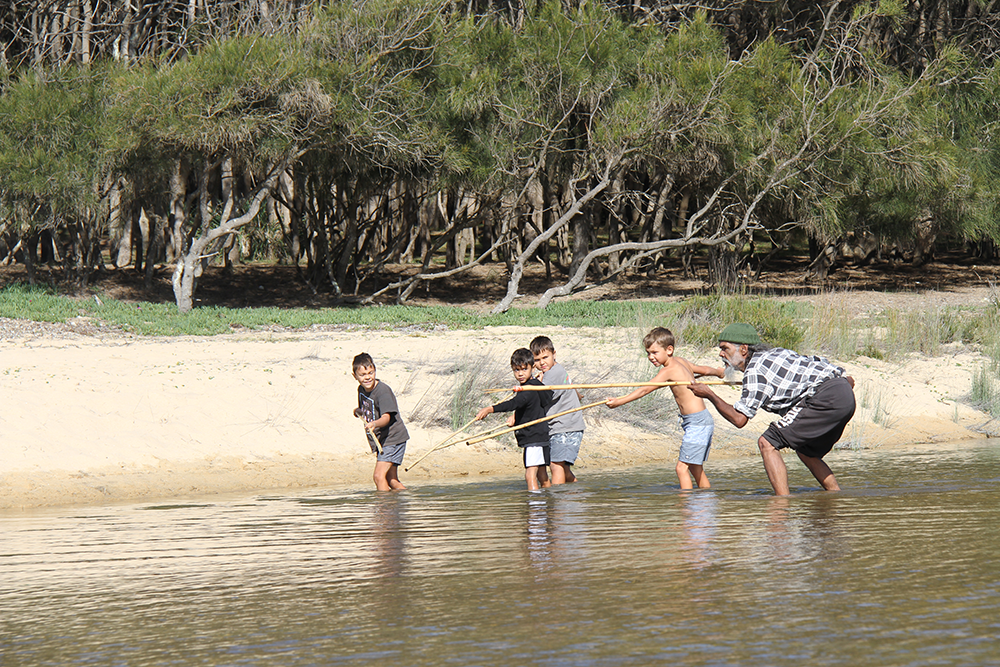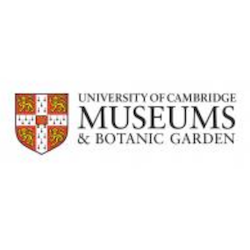On 28 April 1770, Captain Cook's landing at Kamay (Botany Bay, Sydney area) was resisted by Gweagal, the Indigenous Australian people of the area. Soon afterwards the British took away a large number of spears from a local camp.
Three of these spears are on display in Sydney for the first time in 250 years
Four of these spears were given to Trinity College, Cambridge, and were later transferred to MAA. They are regarded today by Gweagal as 'national treasures'. Three of the four have in recent years been exhibited at the National Museum of Australia in Canberra, and are currently on display at the Chau Chak Wing Museum at the University of Sydney, with the support of La Perouse Local Area Land Council.
Click here to find out more about this important loan and display.
The four surviving spears in the MAA collection, three of which are on display at the Chau Chak Wing Museum. MAA D 1914.1, D 1914.2, D 1914.3, D 1914.4
New display of contemporary spears on display at MAA
Gweagal people today continue to use similar multi-pronged fishing spears to fish Kamay waters, often with points made not of bone but metal from the spokes of bicycle and pram wheels.
Demonstrating this continuity, the exhibition in Canberra placed the historic spears alongside a set made by Senior Elder of the Gweagal Clan, Dharawal Nation, Rod Mason. Subsequently, La Perouse Land Council initiated a loan of these three contemporary spears made by Rod Mason to MAA, to reciprocate the Museum's loan back to Country of the spears taken by Cook.
Three contemporary spears by Rod Mason, 2020, on display at MAA. The Gujuga Foundation is the custodian of these spears, on behalf of the La Perouse Aboriginal community.
"There are pages missing from the history of all this stuff. The spears are the first pages. The most important thing is our connection to the things like the spears, that were taken from Botany Bay, and how we're still making spears today - no one can take that away from us, because we've been doing it all our lives." - Rod Mason
Rod Mason, senior Dharawal man and clan leader of the Gweagal with boys from the La Perouse Aboriginal community. Photograph by Kayla Borman, National Museum of Australia, 2020









